Following the great success of Sockeye Camp in Moscow in May 2011, I got a lot of requests for a second camp, not just from Russians but from European players too.
A week after Tyler and I talked about the possibility of holding a second camp in Moscow, he got a request to hold a Sockeye camp in Italy from Italian player Max Vitali. After much contemplation, we decided to organize it as a double camp and share the costs between the two countries. We opted to organize one camp in Lignano, Italy, for all European players, because it’s cheaper and easier for them to get somewhere within the EU, and another camp in Moscow for Russian players, members of national teams, and players who just wanted to visit Russia.
We started organizing the camps early and used the European Ultimate Championship in Slovenia to promote them. Toly Vasilyev, a Russian player, and Max Vitali made a great presentation for European players and showed this promo video about the 2011 Moscow camp. It still sends shivers down my spine when I watch this video. Big thanks to Rustam Khusyainov from Skydisc for making it.
Tyler, Max and I then gave the same presentation at World Beach Ultimate Championships in Italy in late August, 2011, this time to the global ultimate community.
At around the same time, we got two more requests for camps in Ukraine and Germany. Looking at the tournament and holiday schedule for 2012, Skip Sewell and I tried to find different options to build the best schedule to fit everyone’s needs, but we quickly realized that holding camps in all four countries would be too time consuming for the coaches.
I thought of my friend Teddy Browar-Jarus, an American, who plays for Ironside but has roots in Ukraine. I suggested that he lead the camp in Ukraine with some of his Ironside teammates, and we approved the plan after a meeting in Sarasota at USA Nationals.
After a meeting with Sockeye in Seattle at the beginning of November, we approved three locations for Sockeye Camp 2012 – Lignano, Italy (all Europe camp); Berlin, Germany (local Berlin camp); and Moscow, Russia (all Russia camp “plus”). Four players signed up to coach immediately for all three camps– Skip Sewell, Sam Harkness, Nate Castine and Phil Murray.
We opened registration for Sockeye camp for the first 60 spots on November 28 and by December 1, already had 80 participants. We were very surprised and happy. We closed registration on January 1 with 112 paid participants and five coaches, including star player Mike Caldwell. But it did not stop there. In mid-February we bought tickets to Moscow for 14 coaches! We opened the registration again and got 100 more participants, including the entire Russian National mixed team.
Here is the full list of the Moscow coaches (ten Sockeye players, plus four friends invited from other teams):
- Tyler Kinley
- Skip Sewell
- Mike ‘MC’ Caldwell
- Moses Rifkin
- Jaime ‘Idaho’ Arambula
- Sam Harkness
- Nate Castine
- Chris Kosednar
- Phil Murray
- Aaron Talbot
- Mario O’Brien (Rhino, Portland, OR)
- Jolian Dahl (Chain Lightning, Atlanta, GA)
- Brett Matzuka (Ring of Fire, Raleigh, NC)
- Teddy Browar-Jarus (Ironside, Boston, MA)
Sockeye Camp 2012 was in many ways very different the first edition because I already knew what to expect from Sockeye, I knew the good and bad parts of organizing the camp, and I knew what we wanted to change and what we wanted to keep the same. I knew that we needed better fields, so we looked for two full-sized soccer fields with high quality natural grass.
I also knew that it would be much simpler if everyone was living and socializing in the same place, which is why we decided to take the camp outside Moscow to a small town called Bronnitsy, which is used for national soccer camps.
I knew that we needed much more money to rent fields and to pay 14 flights, so we found two sponsors: “Aerocker” – a Russian kit and disc producer and our partner from the first camp; and Moscow State Technical University of N.E.Bauman – one of the best and biggest universities in Russia.
The last thing I knew we needed was a new program, which we started working on about a month before the start of the camps. The coaches kept me up to date with what they were doing.
Chris sent me a short video about their first meeting.
Tyler put me on a mailing list of coaches and I got a chance to see how they worked. He organized meetings, set discussions, and coordinated with what we were doing in Russia. The coaches sent me a lot of emails to discuss details I probably never would have thought about. It seemed they didn’t just want to teach people, but also to learn something new for themselves.
Later I attended the meetings the coaches held in Moscow before and during the camp – every morning, afternoon and evening. I was amazed that they managed to discuss so much! The transition between their behavior before and after a meeting was called was incredible – one minute they were joking around, teasing each other and laughing like little kids, and the next they were like serious professionals, talking in depth about practices, drills, and even psychology. After every practice they shared their experience of working with one or another group of players, amended the next practice plan according to players’ wishes. And then when it was over, they immediately reverted back to being the same funny crazy guys they were before the meeting.
This year we had
- about 200 participants divided into six groups;
- 14 coaches running six stations;
- Three full-sized fields with natural grass (yes, we had to rent one more field);
- Three days with 3+3-hour practices, and two showcase games;
- A hat tournament with 15 “sockeye-camp” teams and nine “non-sockeye-camp” teams, and one showcase game;
- Two “home” parties in the dorms during the camp days and two big parties in clubs during the tournament days.
There was also a major difference from last year in how the days were structured:
Plan for 2011: morning/evening session = warming up (30 minutes) + 4 stations for each group (30 minutes for each station).
Plan for 2012: one session = one station. That means that each group spent ~2.5-3 hours on each station and each group made 2 stations every day. This was much better for coaches and players, because they had enough time to run through all drills, tactics, strategies, etc.
I asked the coaches to write some comments for my article and they responded so well that I just put their answers here without my comments:
Tyler about the Camp in general: We considered having the same format as last year, but decided that innovation was something that Sockeye prides itself in – challenge through change – and also, a number of camp attendees would be returning for their second year, so we wanted to present something new. I pushed the idea of change – the group came up with the idea of the format together (note: 3 hours for 1 station), though, in our planning/strategy meetings. The new format, like many other parts of the camp, were developed as a team.
This year, there were many differences. First, this was one of multiple camps, and it was the last one. Second, we had both new coaches and ones doing it for the second time, like me. Third, it was a new venue, and the timing of the camp was different since it coincided with the Russian holiday, for which Putin changed the date of at the last minute. So, some of our coaches had already been coaching for a month and were bringing in great experience but some level of fatigue, while others brought less direct experience but a lot of energy and enthusiasm. We also had non-Sockeye coaches, which was excellent because they all bought into those aspects of the Sockeye culture we hold dear, and were great additions. The change in venue brought many challenges, first and foremost being access to potable water, which was not easy, and left me scrambling to send people to buy jugs of water then ferrying them around the expansive fields in my rolling suitcase during the clinics! However, as to the clinics themselves, the teaching, the learning experience, it was similar.
During the camp, you could say I was troubleshooting the entire time. There were always issues that would come up — not enough water, changes in start times, changes in later events that needed to be communicated, making sure both coaches and players were happy/safe — and my job was to make the camp run smoothly. I think I did it fairly well. It was exhausting. I never stopped moving.
CK and Brett: Hucking and Pulling Station
Chris: Getting to the sports complex where Sockeye Camp 2012 would take place for the next 3 days was an adventure. Metro ride to train station, train ride to bus station, bus ride to end of the line, 30 minute walk. The camp was “OTP” of Moscow – in the country. The building started as a complex for rowers, it’s right on a river with a long side channel. The building itself was pretty standard, motel, except that there was a back open air hallway that connected all the rooms, made evenings awesome.
We had great weather, sunny and warm during the days and ragging thunderstorms at night – with incredible lightning shows.
The camp had roughly 200 participants divided up into skill level. Sockeye and Co (Jolian, Brett, Teddy, Mario) led 6 separate stations that the participants rotated through over the course of 3 days. Brett and I led ‘hucking’ with some filler at the end tackling power throwing, scoobers, and high-release forehands. Each new group we had allowed us to perfect our approach, and by day 3 things were running like clockwork.
For me, the teaching was refreshing, it’s so inspiring to interact with all these players that still have that sparkle in their eye for the game. Really great. But the stations filled only 6 hours of each day.
There was a cafeteria on site that served traditional Russian cuisine. I wish I’d taken pictures so I could remember each day’s menu, but I’ll do my best from memory. Breakfast was an adventure, corn based porridge with butter (they love cream), hard boiled eggs, hot dogs, salads (think chopped vegetables, cream), and tea. Lunch always had a soup course, Russians know how to do soup. Always enough salt, always hot, and a sort of tonic that put your head back on straight. Pickled carrots, stewed cabbage, buckwheat. Dinner had soup too, meatballs, meat pieces, chicken, chicken cutlets, meat. Carrot salad with sugar. And tea. Hot tea with every meal. But no water. Just tea.
The rest of our time was spent carousing and celebrating with our new Russian friends, mostly in the back hallway. Of course Idaho wanted to celebrate Cinco de Mayo in full American fashion, so Phil purchased the only tequila he could find, at $30 a bottle. Taught everyone Fuck the Dealer, learned a new game where everyone counts down from 10 and at 1 whoever’s turn it is takes off a piece of clothing. Something about what social pressure can make you do – you’d be surprised. Found out that Russians love to drink. It’s tradition to say “I couldn’t possibly have another drink” which means, “yes please, pour me another”.
MC & Teddy BJ: Cutting & Cutter Defense
Short video about one of the drills:
Nate & Sam: Handler O & D & Marking Station
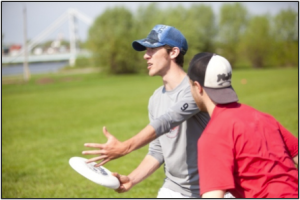
Photo courtesy of Evgeniy Khramov
Sam: Nate and I taught Advanced marking techniques and advanced defensive positioning. We wanted to emphasize expending energy on the mark, and that every marking opportunity is a chance to create a block somewhere on the field. We essentially taught footwork, what your core is doing, what your arms are doing, and adjusting depth and lateral motion to provide tools for players to expend energy through.
Nate was the lead on down field defensive positioning. This also included taking in information that you are hearing and seeing, and processing that information to make a decision to adjust.
Nate and I have been playing together for about 9 years, and have played on Sockeye together for 4 on the defensive line. We know each other really well on and off the field, and all though we are equipped with different skill sets, we have very similar approaches to the game.
The wide range of skill levels was definitely a challenge for us, but I think we did a good job throughout the camp communicating to all the coaches where groups are at with skill development and their understanding of the game. Nate and I used a few warm up drills at the start of our station to also assess the groups for ourselves, and make the proper adjustments for each group.
Coaching new methods often requires breaking some old habits out of players, and players can sometime be stubborn to toss out the old. To my surprise, players at the camp were extremely willing to start from a completely clean slate, and buy in to what we were teaching, no matter how new, strange and confusing they were. It made for a pretty amazing learning environment.
The Russian National Mixed team was a pleasure to coach due to the fact that they brought a different dynamic already having trust in each other. Coaching a team and coaching a clinic have extremely different approaches, so it was fun to tweak our coaching methods to help them grow as a team.
And… dorm life with Russian ultimate players is a blast!
Nate: Sam and I taught a variety of topics that were determined by the skill level of the campers within each group. It varied from a marking progression (breaking each piece up and working on them individually, then eventually working on them as a composite) to working on handler offense/defense.
Sam and I generally traded off teaching things to each group. Sam led most instructional sessions while I chimed in to emphasize the importance of certain topics. Personally I led more often when we were talking about defensive positioning and awareness. An example of an average level group might look something like this:
- Warm up: Go to drill (progress through catching with preferred and off hand, turn and see the field, make mistakes at 100%)
- Marking progression: Get in to partners, and as a group.
- Defensive position was then discussed. Everyone lined up with partners and then had to rotate and reposition themselves depending where the disc was and what force was called out.
- The next things varied depending on the group that we were working with. With some groups we went through Sockeye’s handler set and then taught proper defense against it. With others, we taught how to properly fast break.
The differences between the groups were obviously the skill levels. I thought the grouping was fairly accurate with regards to the players in them. Most of the questions came from the advanced players, which was to be expected.
I enjoyed working with the advanced guys the most because they were the most attentive. I was expecting some resistance, maybe some arrogance, but we didn’t’ really receive any of that. The group as a whole was very receptive and eager to get better.
The Russian National Mixed team was talented and fun to work with. There was some joking around and obviously some chatter that was hard to minimize. Their men worked hard and were pretty good, but the strength was obviously with the women. Working with them for example, we didn’t teach handler sets because we didn’t want to disrupt a system that they probably already had in place. So we worked on other things, like proper fast breaking, and getting blocks without fouls.
Idaho & Phil: Field Awareness, Creative Throwing, and Physicality Station
Idaho: We had a couple different stations depending on experience level. Ranging from throwing hammers and lefty backhands effectively to dealing with physicality and field awareness.
Phil was my main man, and great at being a calming force when I was talking too fast or forgot the finer points of the subjects. It was my first time working with Phil as a coach. It was great, and our different personalities worked well together.
I like extremes. I like working with the new players, because you see them get better, literally, in one session. I like working with the most experienced players because it challenges me to come up with topics and concepts that they haven’t seen, or that challenges their knowledge of the game.
The Russian National Mixed team was super athletic. Most notably, the women of the team are very very strong, that is a crucial factor at the elite level of the mixed division. There are a couple strategic tweaks to this team that could really make them a contender.
Phil: I worked on a special station with Idaho. We worked on either unusual throws (scoobers and hammers), when to throw them, how to throw them etc. or physicality and awareness through a series of drills and talking points. I have never coached with Idaho before but he is very easy to coach with and we personally get along really well. Idaho is always very organized and thoughtful and he had these great ideas about the topics. In reality it was Idaho’s station and I was there to offer my approach to the topics as well. But generally they were the same as Ho’s because I sort of came up through the same teaching process. In my opinion these are the two most important skills (awareness and physicality) in the game.
Personally I enjoyed working with the advanced men because it felt like I was working with my old college team, and they had the sort of demeanor that I’m used to when playing.
Moses & Skip: Endzone O & D Station
Skip: Moses and I taught endzone offense at our station. He and I traded off leads for each segment of the process. Moses and I have been coaching high school together for 2 years. I am incredibly comfortable teaching with him.
All of the hardest questions start with “what if…..” because students are looking to get the textbook correct answer for every specific situation. The thing that I hope we left people with is a framework for thinking constructively and creatively about this part of the game — where the stakes are highest and the amount of room left to operate in is so small.
I loved working with the mixed national team because the station we were teaching wasn’t so much an individual skill as a team skill and it helped us as instructors to be able to teach it to players that will be applying it together later on. They were so dedicated to working hard and I’m really looking forward to seeing them do well in Japan.
They have the talent and technical skills to do really well. I think they’re going to turn a lot of heads in Japan.
Moses: Skip and I created a station that was generally about ‘getting out of tight spaces’, i.e. offensive success when the field space available is small. Practically, it largely became about end zone offense and simplifying the relationship between the thrower and the receiver when the throws are short.
Skip and I have worked together extensively. In addition to being close friends, Skip and I have coached the University Prep (the high school where I teach) Ultimate teams together, along with other coaches, for several years.
Skip had the idea to set a very aggressive, high-level tone and challenge them to respond, and I think they did. I was impressed by their overall skill and their ability to work well together – particularly their willingness to integrate their strong female players, something many American coed teams struggle to do. When we asked them to work hard, even after 2.5 draining days, they did, and I was grateful for and appreciative of that.
Jolian, Mario, and Aaron: Zone O & D Station
Mario: The focus of our station was Zone Defense and Offense. Jolian and I shared the primary teaching roles, while Aaron supported our instruction by giving individual feedback and filling in gaps as needed.
Defensively, we focused on 3 skills that apply to any zone defense: working together, communication, and turning your head to find the threat. We then applied those skills in implementing a basic 3-3-1 zone.
Offensively we identified the 3 ways to beat a zone (through, over, around) and then gave the offense different situations to solve through game repetitions. We provided guidance and suggestions but tried to allow players time to explore the costs/benefits of certain throws, moves, and formations.
My two favorite groups to work with were the Russian National Team and the advanced women’s group. The women had the perfect balance between fun and focus. They were obviously there to get better, but not at the cost of a laugh or a smile.
The National team was obviously driven. We challenged them to a tough, realistic goal: be the most focused, hard-working team in the world while at our station. They rose to the occasion.
Tyler: Often I helped any group that looked to need help, or seemed to be most helped by one more coach being present. For some groups, this was because a certain drill was best done with an extra coach. Sometimes, coaches simply got tired, and I would help instill energy or relieve a coach if he was exhausted. Other coaches were great — I acted like a substitute teacher.
The women are where I believe their true strength lies. Many are just outstanding, and would be dominant in the US — I could see multiple women from this team on a Riot or a Fury. This is not to discount their men, but to simply state that their women are what could give them an advantage over many other national mixed teams, and that they can be strategically used as such.
The Hat Tournament
Chris: My team consisted of 3-4 of the top players on 3-4 different Russian open teams. The number one player from Kiev, a Swede who had come to see if Sockeye was a worthwhile ask for his mother land. And an investment banker who lived in Crete. A top Russian women’s player, a deep cutter who used to be a runner who went to athlete school since grade 2. And Estonia’s best woman.
We went down 0-4 in the first game. I was almost resigned to our fate. The rain began to fall. And Fall. Now at first I thought this was an early summer storm. We finally scored on offense and rattled of 5 straight breaks to go up 6-4. And the 30 minutes were done. The cheer we (the Russians) created after the game translates roughly into “We are the titans that rain down upon you”.
We proceed to take first seed in the pool amassing a record of 4-1.
In that two day period, we watched two Russians (1 who was our hostess) have a 12 shot race, learned the definition of a ‘social vampire’ (translated), watched a man play stand up bass in nothing but a old leather trench coat and eye tattoos, were turned down from dunkin donuts at end up eating at Baskin Robbins at 5:15am, sleep for 2 hours spooning with Brett on a kitchen seat that folds into a small, padded bench, got up at 8, rode from Belorusskaya station to Cysoloskly (or something to that effect), cleats on for 10 hours, got back to Masha’s, prepared for the tight n’ bright party, became momentarily detained by the police, arrived at crazy dance party, night full of neon and drop shots. Flagged down a cab (just a random car, this became a way for Russians to make some money on the side in the 1980s so now everybody is a cab) at 5:30am and payed 300 rubles (relatively cheap) for the ride back to Masha’s – woke up at 8:30 and metro back to the fields, escaped to a beanbag chair and furiously tried to remember the rules to Schtick which I was leading to a group of 90 Russians in the next 15 minutes.
Mobek was embarrassed for me. I didn’t know the rules to Schtick.
“Schtick was invented by Carleton, Chris”, said Mobek, Moses Russian (drunk) alter ego “You dumb idiot, stop moaning about missing alumni weekend” – or something that translates to that now.
Finals! Our hat team made it to finals – grey and red baby.
We would face the red team – oddly enough not a hat team, but a group of players from a small town, they don’t have enough good players to field a 7 man roster, but 5v5, they are good. And the best part, their start player calls himself ‘God’ and the other players refer to themselves as the ‘Archangels’. And so does the rest of Russian Ultimate.
Long story short, we go down a break early, we get the break back, but there team was just too strong, they knew each other well. We spent the next few hours lounging in the sun before the awards ceremony and a metro ride back to Masha’s to pack up our gear and prepare for St. Petes – we had a train at midnight.
Tyler: Interestingly, my team was comprised of some of the best players, and was a favorite to do very well, if not win. We did not, at all, and I actually (honestly) attribute this to myself. I often found my “Sockeye” style of playing was not in rhythm with the disc movement, timing, and throw-progression of my excellent Russian teammates. Often I look for a give and go, where they looked for a subsequent downfield pass. Or, I look to the break when they expected a simple dump. It was a true learning experience for me, and one of cultural differences – in Ultimate playing sense – to be an obstacle to overcome.
Mario: For most players on my team, it was their first year playing in the top division at the tournament. Everyone was excited to play at a level that would be challenging to them. Before we played our first game, we made a decision to focus on one thing: supporting each other. This meant we encouraged each other no matter what the score, and we were always talking from the sideline. Our finest moments came in a couple games that were tied near the end, we called time out, and then were able to get a break to take the lead and win the game. These moments were especially rewarding because everyone committed to support each other from the sidelines, and everyone on the field committed to putting everything into that point. We grew and developed as a team as the tournament progressed. We finished the tournament by sitting together and sharing our favorite moments from the tournament, and acknowledging the growth we had from start to finish.
Moses: Cha Cha Poya! It was a genuine pleasure to get to know and to work with my teammates on the white team in the Second Division. We had some successes on the field, but more than that, I really appreciated how everyone’s enthusiasm stayed high whether we were winning or losing. I think everyone improved, we had a lot of fun, and we really came together as a team. Cha Cha Poya!
Sam: I was so proud of how my team performed both on the field play and in spirit of the game. We were an extremely supportive team, and I could feel that support through every game.
Note: Sam’s team placed 3rd and won Spirit Of The Game.
Nate: My team was great. Super motivated, very spirit oriented, and grew together throughout the tournament. I had a blast with them. We struggled a bit after the party…but that was a decision we made going in to it. We wanted to perform the best we could without sacrificing our ability to win the party. The thing I was most proud of was individuals on the team really preaching about keeping our spirit high and lifting each other up when we were down.
Outside of the Game
Phil Murray: I had few expectations for Moscow and its people besides what I had heard from the other Fish. The only real people I interacted with were there to actively help me. Nobody made me feel uncomfortable at any point. Although I knew everyone knew I was foreign but that’s usually the case whenever I travel outside the States. If I were to go back I would try to limit my interactions with the Ultimate community for a few days to experience more.
Idaho: The format was tough. 6 straight days of Ultimate/camps was tough mentally. I was excited that we got to get a few days off to see other parts of Moscow that we didn’t get to see last time (Victory Park, Gorky Park). Of course, the party was great.
Russian ultimate is in a pivotal state right now. Like other countries over the last 5 years, they are on the precipice of rising to the next level of play, collectively. I think the deciding factors will be a solid leadership base, and the willingness of the best players in Russia to be open to new styles of play, and the ability to receive, and adjust, to candid feedback.
Mario: I really didn’t know what to expect. Unfortunately, my prior knowledge of the Russian people seemed to be based on villains from action movies (Rocky, the Bourne Series, Bond)
The enthusiasm I see for Ultimate and the community is vibrant and beautiful. Players truly enjoy being with each other and learning the game. Spirit of the game is alive and well in Russia, and I think this bodes well for the future of Russian ultimate.
I can’t wait to come back to Russia. The Ultimate community is moving in the right direction, the culture is unique, and the people have the right attitude about how the game should be played, on and off the field. It was truly an honor to have been invited, and I cannot wait to see what blossoms from the Russian Ultimate community in the near future.
Moses: I felt, honestly, that we mostly existed inside of a little Ultimate Bubble that could have been in any country; in other words, I felt very comfortable the whole time. If anything, it was striking how welcoming and warm every Russian that we met was: at the camp and at the tournament and among our hosts in Moscow, everyone was so kind and generous. Yes, we joked about ‘Moscow Face’ – the seeming sternness of Russians in public spaces – but all of my interactions with Russians were very personable.
Nate about Russia and Moscow:
This is a hard question because I had so many expectations and ideas in my head before coming due to all the stories from the year before. Moscow as a city was what I expected. It is a place I was very excited to experience, but would be okay not going back. The people however were amazing and made the camp truly what it was. I loved my visit and would love to go back and do another camp in the future. I was glad we were able to be outside of the city and all together with the campers. That made the experience truly great.
Tyler about Russia and Moscow: My first visit introduced me to Russia, Russian ultimate, and its people. My second visit allowed me to feel like I grew to knew them, understand them better, and get a richer bond. I saw much more than I did in my first visit in terms of how the history of Russia shaped its culture, and how its culture affected its methodology in all aspects of ultimate, from how teammates communicate, to how decisions are made on a team, to how the leadership structure of a team is created, to how goals are decided upon. I learned much more in my second visit about Russia.
For any ultimate considering a trip to Russia, know that it will be an incredibly rewarding experience in a country full of ultimate players who know more about their cultural history and are willing to teach you about it (as well as accommodate you on your trip) than you’d ever expect. Well worth the extra cost of a visa. I’m looking forward to going back someday soon.
And this is not the end of the story because the things we learnt from Sockeye are still living in our lives, in our games and in our memories.
Hope to see you again!
Special thanks to:
to Toly Vasilyev and Alex Fomin for organizational help.
to our sponsors and partners: Sergey Shamilov and “Aerocker,” and Ilya Vishnitskiy and the Bauman Moscow State Technical University.
to Dima Lyakin and Daria Cherepennikova for our official website www.sockeye-camp.com.
to Natasha Doff for translation and Marta Chernova for working with interpreters.
to Eugenie Kharina for organization accommodation and meals for everybody.
to Olga Barsukova, Timur Kary-Niyazov, Mary Gess, Eugenie Rylova and Tanny Ponomareva for hosting our coaches.
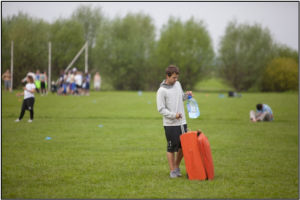
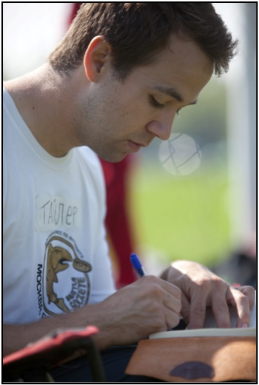
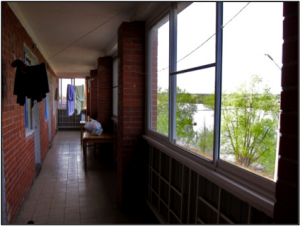

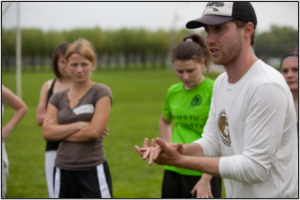
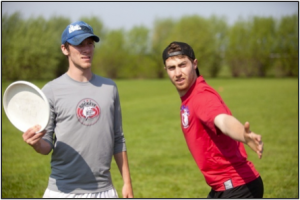
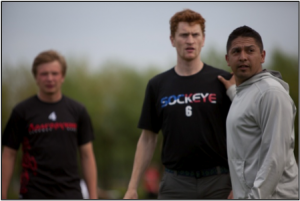
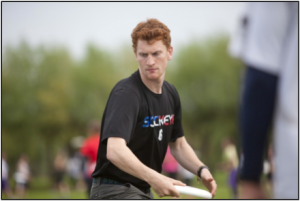
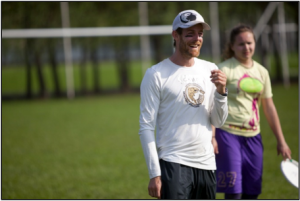
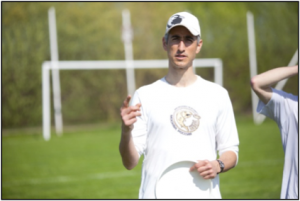
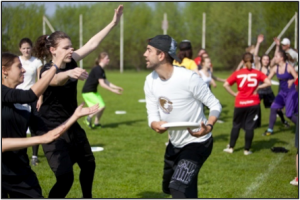

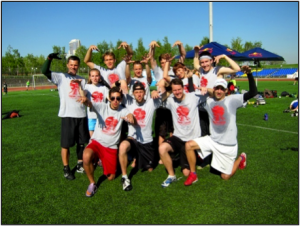
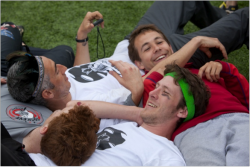
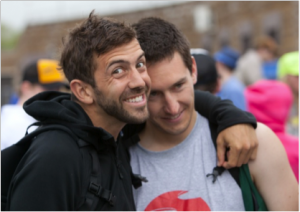
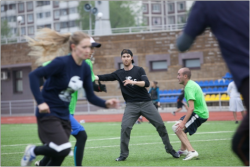
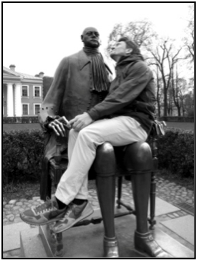
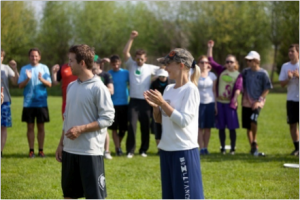









Comments Policy: At Skyd, we value all legitimate contributions to the discussion of ultimate. However, please ensure your input is respectful. Hateful, slanderous, or disrespectful comments will be deleted. For grammatical, factual, and typographic errors, instead of leaving a comment, please e-mail our editors directly at editors [at] skydmagazine.com.